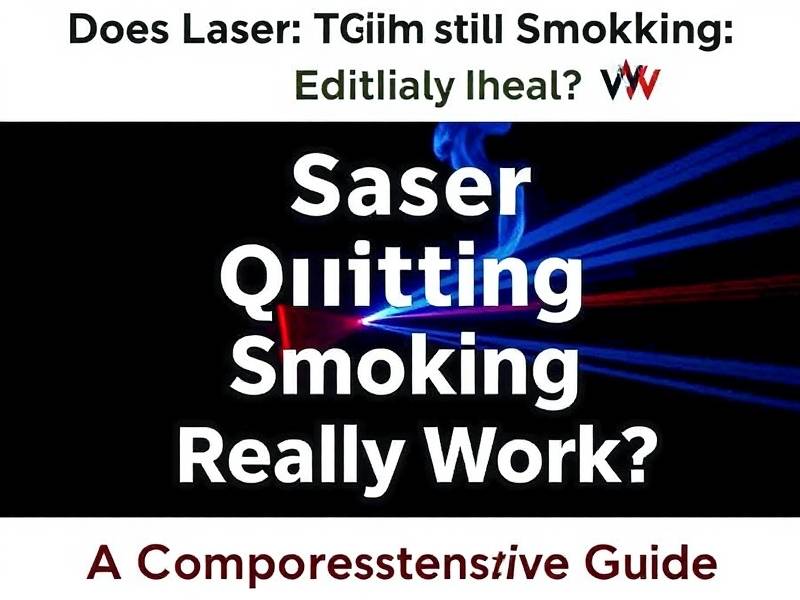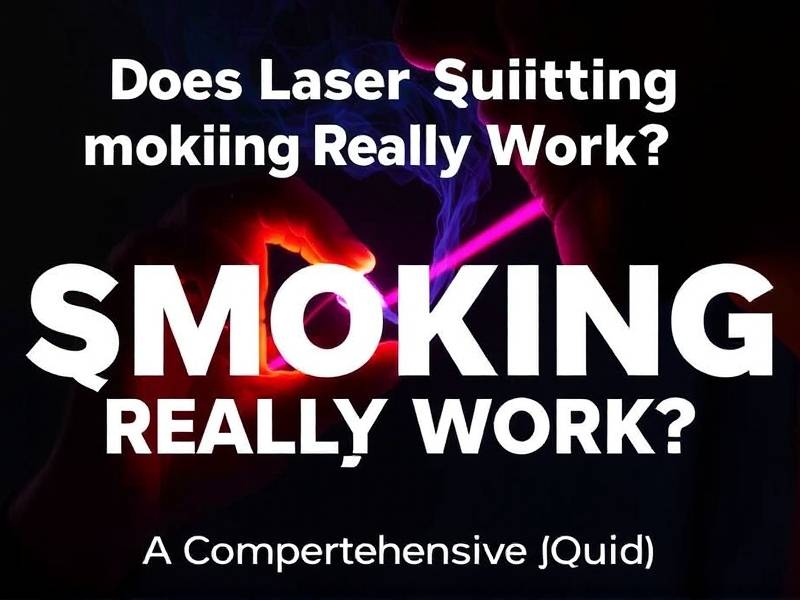Does Laser Quitting Smoking Really Work? A Comprehensive Guide
Introduction: The Quest for a Smoke-Free Life
In the vast sea of quitting smoking methods, laser therapy has emerged as a novel approach. But does it actually work? This comprehensive guide explores the science behind laser quitting smoking, its effectiveness, and what you need to know before considering this alternative.
What is Laser Quitting Smoking?
Laser quitting smoking, also known as cold laser therapy or low-level laser therapy (LLLT), involves using low-power lasers to stimulate specific points on the body. Proponents claim that this stimulation can help alleviate withdrawal symptoms and reduce cravings, making it easier to quit smoking.
The Science Behind Laser Quitting Smoking
The theory behind laser quitting smoking is based on the idea that specific points on the body are connected to various physiological functions. By stimulating these points with a laser, it is believed that one can influence these functions and aid in quitting smoking.

However, scientific evidence supporting this theory is limited. While some studies suggest that laser therapy may be beneficial for certain individuals, others have found no significant difference between laser therapy and placebo treatments.
Is Laser Quitting Smoking Effective?
The effectiveness of laser quitting smoking remains controversial. Some individuals report positive outcomes, while others find it ineffective or even harmful.

Positive Outcomes
- Reduced Cravings: Some smokers report experiencing reduced cravings for cigarettes during and after treatment.
- Mild Side Effects: Laser therapy is generally considered safe with minimal side effects compared to other quitting methods.
- Complementary Approach: Many users find that combining laser therapy with other quit-smoking strategies enhances their chances of success.
Negative Outcomes
- Limited Scientific Evidence: The scientific community has yet to establish definitive evidence regarding the efficacy of laser quitting smoking.
- Cost: Laser therapy can be expensive compared to other quit-smoking methods.
- Potential Risks: Some individuals may experience adverse reactions or discomfort during treatment.
How Does Laser Quitting Smoking Work?
The process of laser quitting smoking typically involves several sessions over a few weeks. During each session, a trained therapist uses a low-power laser device to stimulate specific points on your body. These points are believed to be connected to nicotine addiction and withdrawal symptoms.
While the exact mechanism of action remains unclear, proponents argue that the laser's energy helps activate endorphins and other neurotransmitters responsible for reducing cravings and alleviating withdrawal symptoms.
Considerations Before Trying Laser Quitting Smoking
Before considering laser quitting smoking, here are some important factors to consider:
- Research Your Options: Consult with healthcare professionals or quit-smoking specialists who have experience with various methods.
- Understand Potential Risks: Be aware of potential side effects or adverse reactions.
- Set Realistic Expectations: While some individuals may find success with this method, others may not.
- Explore Other Strategies: Combine laser therapy with other quit-smoking techniques for better results.
Conclusion: Weighing the Pros and Cons
Laser quitting smoking remains an unproven method with mixed results. While some individuals may benefit from this approach, others may find it ineffective or even harmful. Ultimately, the decision to try激光戒烟应基于个人情况和医生的建议。 As always, seeking professional advice is crucial when considering any quit-smoking strategy.
